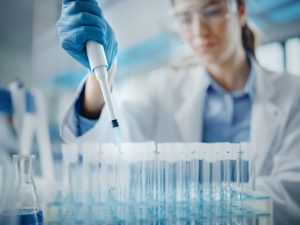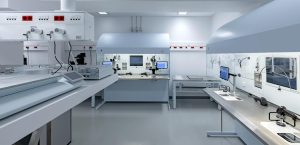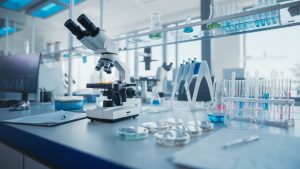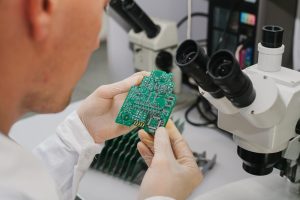The healthcare industry, a complex and multifaceted system, is driven by numerous components that work together to ensure the well-being of individuals and communities. Among these components, pharmaceutical supplies and diagnostic equipment stand out as critical pillars. These elements not only facilitate the delivery of effective treatments but also play a crucial role in the early detection and management of diseases. In this blog, we will delve into the significance, advancements, challenges, and future prospects of pharmaceutical supplies and diagnostic equipment in modern healthcare.
The Importance of Pharmaceutical Supplies
Pharmaceutical supplies encompass a wide range of products, including medications, vaccines, and various therapeutic agents. These supplies are fundamental to the treatment and prevention of diseases, ensuring that patients receive the necessary interventions to manage their health conditions.
Medications: The Core of Treatment
Medications are perhaps the most recognizable aspect of pharmaceutical supplies. They include a vast array of drugs designed to treat various ailments, from antibiotics for bacterial infections to antihypertensives for high blood pressure. The development and availability of these medications have dramatically improved health outcomes and increased life expectancy.
The pharmaceutical industry invests heavily in research and development (R&D) to discover new drugs and improve existing ones. This continuous innovation is crucial in the fight against emerging diseases and in addressing conditions that were once deemed untreatable. For instance, the development of antiviral drugs has been pivotal in managing diseases such as HIV/AIDS and hepatitis C, turning them from fatal conditions into manageable chronic diseases.
Vaccines: Preventing Disease Before It Starts
Vaccines are another vital component of pharmaceutical supplies. They are designed to prevent infectious diseases by stimulating the body’s immune system to recognize and combat pathogens. Vaccination programs have eradicated or significantly reduced the prevalence of diseases like smallpox, polio, and measles, saving millions of lives worldwide.
The COVID-19 pandemic highlighted the critical role of vaccines in global health. The rapid development and distribution of COVID-19 vaccines demonstrated the potential of modern biotechnology and the importance of international collaboration in addressing public health crises. Vaccination remains one of the most effective strategies for disease prevention and control, underscoring the need for ongoing investment in vaccine research and distribution infrastructure.
Therapeutic Agents: Specialized Treatments
Beyond medications and vaccines, pharmaceutical supplies also include therapeutic agents used in specialized treatments. These can range from biologics, which are derived from living organisms, to gene therapies that target specific genetic disorders. These advanced therapies offer hope for patients with conditions that have limited treatment options, such as certain types of cancer and rare genetic diseases.
The advent of personalized medicine, which tailors treatments to individual patients based on their genetic makeup, is a significant advancement in this field. By understanding the genetic basis of diseases, healthcare providers can develop more effective and targeted therapies, improving patient outcomes and reducing adverse effects.
The Role of Diagnostic Equipment
While pharmaceutical supplies are essential for treatment, diagnostic equipment is crucial for identifying health issues and guiding appropriate interventions. Diagnostic tools range from basic devices like thermometers and stethoscopes to advanced imaging systems and molecular diagnostic technologies.
Traditional Diagnostic Tools
Traditional diagnostic tools, such as blood pressure monitors, glucometers, and electrocardiograms (ECGs), are essential for routine health assessments and monitoring chronic conditions. These devices provide healthcare professionals with vital information about a patient’s health status, enabling timely and accurate diagnoses.
For example, glucometers are indispensable for individuals with diabetes, allowing them to monitor their blood glucose levels and manage their condition effectively. Similarly, ECGs are critical for diagnosing and monitoring heart conditions, helping to prevent serious complications like heart attacks and strokes.
Advanced Imaging Technologies
Advanced imaging technologies, such as X-rays, magnetic resonance imaging (MRI), and computed tomography (CT) scans, have revolutionized diagnostic capabilities. These tools allow healthcare providers to visualize the internal structures of the body with remarkable detail, aiding in the detection and evaluation of various conditions, from fractures to tumors.
The development of imaging technologies continues to evolve, with innovations like 3D imaging and functional MRI (fMRI) providing even more detailed and dynamic views of the body’s systems. These advancements enhance the ability to diagnose complex conditions and guide precise surgical interventions, improving patient outcomes.
Molecular Diagnostics
Molecular diagnostics represent a cutting-edge area of diagnostic equipment, leveraging advancements in genomics and biotechnology. These tests analyze biological markers at the molecular level, providing insights into genetic mutations, infections, and other conditions.
For instance, polymerase chain reaction (PCR) tests have become a cornerstone of infectious disease diagnostics, enabling the rapid and accurate detection of pathogens such as viruses and bacteria. The widespread use of PCR tests during the COVID-19 pandemic underscored their importance in managing public health crises by facilitating early detection and containment of the virus.
Next-generation sequencing (NGS) is another revolutionary molecular diagnostic tool, allowing for comprehensive analysis of genetic information. NGS has applications in various fields, including oncology, where it helps identify genetic mutations driving cancer and informs personalized treatment plans.
Challenges in the Supply and Utilization of Pharmaceutical and Diagnostic Tools
Despite their critical importance, the supply and utilization of pharmaceutical products and diagnostic equipment face several challenges. These obstacles can impact the effectiveness of healthcare delivery and the overall health outcomes of populations.
Access and Affordability
One of the most significant challenges is ensuring access and affordability of these essential tools. In many low- and middle-income countries, limited resources and infrastructure hinder the availability of medications, vaccines, and diagnostic equipment. This disparity can lead to inadequate disease management and preventable deaths.
Efforts to address this issue include initiatives by international organizations, governments, and non-profits to improve healthcare infrastructure, subsidize costs, and ensure equitable distribution of supplies. For example, the Global Vaccine Alliance (Gavi) has been instrumental in increasing vaccination coverage in developing countries, contributing to the reduction of vaccine-preventable diseases.
Supply Chain Disruptions
The global supply chain for pharmaceutical supplies and diagnostic equipment is complex and susceptible to disruptions. Events such as natural disasters, political instability, and pandemics can lead to shortages and delays in the delivery of essential healthcare products.
The COVID-19 pandemic exposed vulnerabilities in the supply chain, prompting efforts to enhance resilience and ensure continuity of supply. Strategies include diversifying manufacturing locations, increasing stockpiles of critical supplies, and improving logistics and distribution networks.
Regulatory and Quality Control
Ensuring the safety and efficacy of pharmaceutical products and diagnostic equipment is paramount. Regulatory agencies, such as the U.S. Food and Drug Administration (FDA) and the European Medicines Agency (EMA), oversee the approval and monitoring of these products to safeguard public health.
However, the regulatory process can be lengthy and complex, potentially delaying the availability of new treatments and technologies. Balancing the need for thorough evaluation with the urgency of addressing health crises is an ongoing challenge. Additionally, maintaining rigorous quality control standards is essential to prevent the distribution of counterfeit or substandard products, which can have dire consequences for patient safety.
Future Prospects and Innovations
The future of pharmaceutical supplies and diagnostic equipment is promising, with ongoing advancements poised to transform healthcare delivery further. Innovations in biotechnology, artificial intelligence (AI), and digital health are driving this progress.
Biotechnology and Personalized Medicine
Biotechnology continues to push the boundaries of what is possible in pharmaceutical development and diagnostics. The advent of CRISPR-Cas9 gene editing technology holds the potential to cure genetic disorders by precisely altering DNA sequences. Additionally, advancements in stem cell research and regenerative medicine offer new avenues for treating conditions that currently have limited options.
Personalized medicine, which tailors treatments to an individual’s genetic profile, is becoming increasingly feasible with advances in genomics and bioinformatics. This approach promises to enhance the efficacy of treatments and minimize adverse effects, ushering in a new era of precision healthcare.
Artificial Intelligence and Machine Learning
AI and machine learning are revolutionizing diagnostic capabilities and pharmaceutical research. AI algorithms can analyze vast amounts of data from medical records, imaging studies, and genomic information to identify patterns and predict outcomes. This enables earlier and more accurate diagnoses, as well as the identification of potential therapeutic targets.
In drug discovery, AI accelerates the identification of promising compounds and predicts their interactions with biological targets, reducing the time and cost associated with traditional R&D processes. AI-driven drug design has the potential to bring new treatments to market faster, addressing unmet medical needs more efficiently.
Digital Health and Telemedicine
The integration of digital health technologies, including telemedicine and wearable devices, is transforming healthcare delivery. Telemedicine platforms enable remote consultations, improving access to healthcare for individuals in underserved areas and reducing the burden on healthcare facilities.
Wearable devices, such as smartwatches and fitness trackers, continuously monitor health parameters like heart rate, physical activity, and sleep patterns. These devices provide real-time data to patients and healthcare providers, facilitating proactive health management and early intervention.
Conclusion
Pharmaceutical supplies and diagnostic equipment are the backbone of modern healthcare, playing a crucial role in the prevention, diagnosis, and treatment of diseases. While significant challenges exist in ensuring access, affordability, and quality, ongoing advancements and innovations promise to address these issues and enhance healthcare delivery.
As we move forward, the continued integration of biotechnology, AI, and digital health technologies will drive progress in this field, offering new opportunities to improve patient outcomes and achieve a healthier future for all. By investing in these critical components of healthcare, we can build a resilient and equitable healthcare system capable of meeting the evolving needs of populations worldwide.











